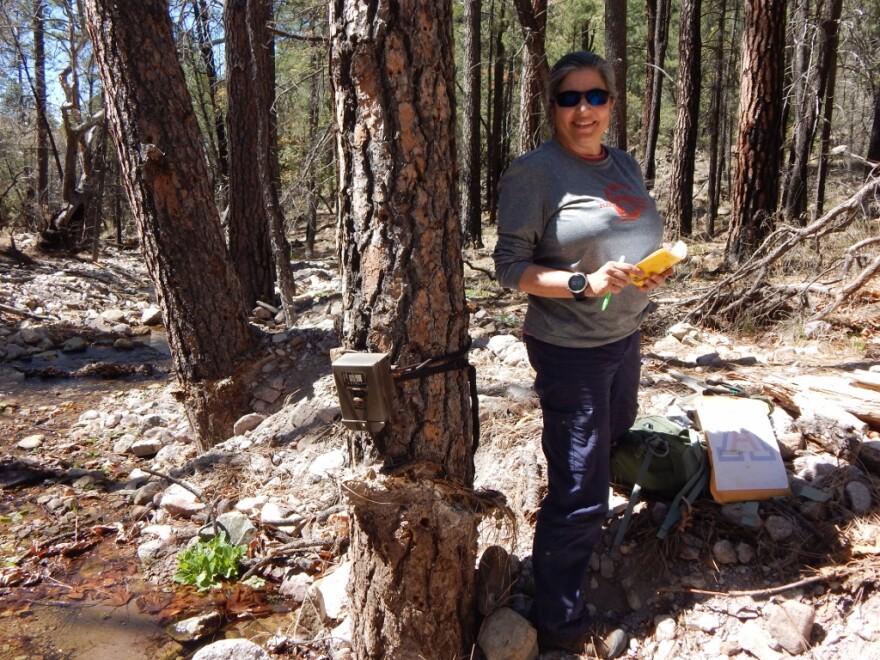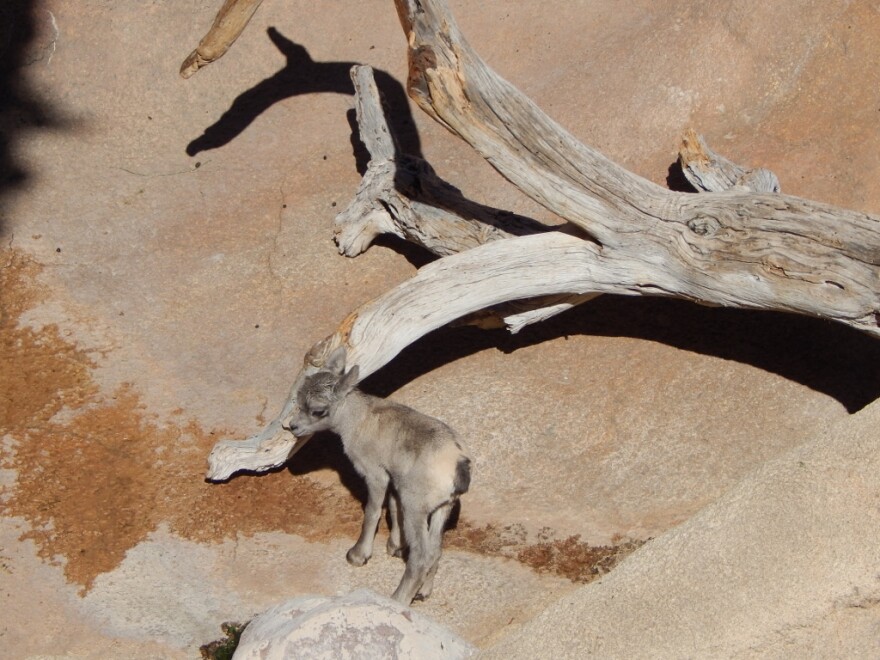Arizona and Sonora, Mexico are one ecosystem—a diverse and rugged desert—but they’re split by hundreds of miles of fences and vehicle barriers. Scientists want to know how the current U.S.-Mexico border wall affects wildlife, and what will happen if that barrier is made more impenetrable. As KNAU’s Melissa Sevigny reports, doing research in this region is fraught with complications.
Melanie Culver of the U.S. Geological Survey splashes through a creek in a mountain range south of Tucson. She straps a wildlife camera to a tree and sets the flash, hoping it will catch a jaguar.

The flash, she says, “gets better resolution at night on the spot patterns if we’re so lucky as to get a spotted cat.” The endangered tropical cats once roamed as far north as the Grand Canyon, but now they’re rarely found in Arizona. If Culver photographs one here, it’ll be a clue as to how jaguars cross the border from Mexico into the U.S.
Culver says if a solid wall is built on the border, “you could have a negative situation where you have a small population that’s suddenly cut off from the large part of its gene pool on the other side of that border.”
There’s never been a systematic study of the border wall’s effect on wildlife. But scientists know animals need to move—sometimes long distances—to search out food, water and mates. When they can’t, local populations can go extinct.

“If we wall off Arizona, you can kiss jaguar populations goodbye,” says University of Arizona ecologist Aaron Flesch. “It’s not just the wall. It’s also the roads, the activity around the wall, the patrols, the lighting.”

Federal projects like this border infrastructure normally receive scientific review under laws such as the Endangered Species Act. But in 2005 Congress passed legislation that allows the Secretary of Homeland Security to waive environmental laws to speed up the wall’s construction.
“Lots of the mechanisms we have had to support research, don’t really seem to be there, or at least seem to be degraded somewhat,” Flesch explains.
In addition, there’s no formal protocol for scientists and the Border Patrol to communicate with one another. Daniel Hernandez, Tucson Sector agent, says, “I know there’s several different entities, depending on state lands, federal lands, and the one challenge we have is communicating between all the partners.”
People working in the field encounter law enforcement, militia, and migrants crossing the border. It’s hard to know who’s who. Scientists are followed by helicopters or find their equipment vandalized. All this complicates doing field work.
There’s a need for more data to see which species are most at risk from a wall. Sergio Avila, research biologist for the Arizona-Sonora Desert Museum, says, “We never had the opportunity to run baseline studies in the beginning of the construction to know: okay, these is the species we have here, this is what’s at stake.”

For Avila, what’s at stake is a lush, green, diverse region. He says it’s the same desert, north or south of the border. “That’s one of the beautiful things about our Sonoran Desert: nature has no borders, there’s no way to tell where that political human straight-line border is.”
But the border is there, a political boundary and increasingly a physical one. U.S. Customs and Border Protection is currently reviewing bids for a solid concrete wall.







